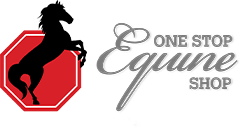Choosing the right hay bag for your horse and situation involves considering a number of factors. First, is your horse a Hoover vacuum with his feed? Or is he a slow, methodical eater? Is your horse prone to ulcers? Is your horse overweight? Is your horse skinny and hard to keep weight on?
Hay Bags For the Horse Trailer
When answering these questions, it is also important to think about where your hay bag is meant to be used. For example, if you have an overweight horse that is enthusiastic about eating, but he is prone to ulcers, anxious and worried when he trailers, then giving him a large hay net that will be empty in a short period of time, leaving all the hay fallen onto the ground where he can’t access it, is not ideal for long trips. For hay bags used in the horse trailer, it is often advisable to choose the type that has a solid bottom, so the hay is accessible throughout the trip. These may not be the best hay bags for horses with respiratory concerns, however, as they must keep putting their nose into the bag where the finite leaves, dust and particles are left. Great hay bags for the trailer, therefore, are ones like the Roma Nylon Hay Bag or the Shires Hay Bag.
A great option for a horse that may have respiratory concerns, is something like the Shires Deluxe Hay Bag, as the horse has to work the strands of hay through the netting but can’t actually put his nose in and expose himself to the fine particles that can add to respiratory distress.
Hay Bags For the Outdoor Paddock
To save hay, or to slow down a horse that either eats quickly, or has ulcers and needs to eat throughout the day, minimizing any long period that he must endure without roughage intake, some horse owners or barn managers like to use hay bags outside. This is a good idea, however, there is a serious safety concern. Hay nets, such as the Shires Hay Net or the Shires Deluxe Hay Net, should be tied high enough when filled, that they are still safely out of the reach of a horses’ legs when emptied.
Unless there are some hooks fixed to an outdoor shelter, the most common place to hang a hay net or bag outside is on the fence. If this has to be the case, then it is IMPERATIVE that safety is considered, and there is no chance for a horse to catch his legs in the hay bag, or in the draw string or hanger that it is secured from. The hay bags recommended for the trailer are okay, the safest one being the Shires Deluxe Hay Bag, as there is not a way for a horse to put his leg through the hole used to access the contents. A combination bag and net, that has the advantages of a hay net, with a much safer design for the outdoor paddock (provided the draw string is safely secured and tightened in a manner that a horse can catch a leg on it), is the Shires Hay Bag Net.
Hay Bags For the Stall
Most hay bags are designed for use in the stall, so it can be assumed that provided they are hung high enough, they are safe no matter the type you choose. In this case, choosing the right hay bag comes down to: ease of filling, weight or condition of your horse, and length of time between feedings. Many barns have a night feed, but even with a night feed, many have the last feed of the day early in the evening. Because we tend to feed rich, high quality hay to our horses, we need to limit the quantity or our horse becomes obese. Given this, most horses are given between 2 and 3 flakes of hay at one feeding and are usually done this amount in 2-3 hours. With these considerations in mind, many horses are finished their last feeding of hay by 10 pm, and often are fed until 7 or 8 am, going 9-10 hours without any hay.
For horses housed in situations where there is no night feed, this period without feed is even longer. As preventative management for the development of ulcers, for obese horses that have a strict diet, or for horses that binge and eat quickly, slow feed nets are the best choice of hay bag for a stall. They are simply hay bags that have a sturdy netting in various diameters. The tighter the weave, the slower the feed net.
For ponies that are often at high risk of obesity and fed the least amount of hay, the smaller netting size, as found in the Shires Greedy Feeder Net, is best. For horses that are not as risk of obesity, and simply waste hay or are prone to ulcers, a hay net with 2” holes, like the Shires Deluxe Hay Net may be perfect. Hay bags are easier to fill, and there are ones that combine the netting to slow a horse down, and the design of a bag, such as the Shires Hay Net Bag or the Shires Deluxe Hay Bag. When night feeds are in place, and running out of hay is not a concern, then any hay bag is terrific.

